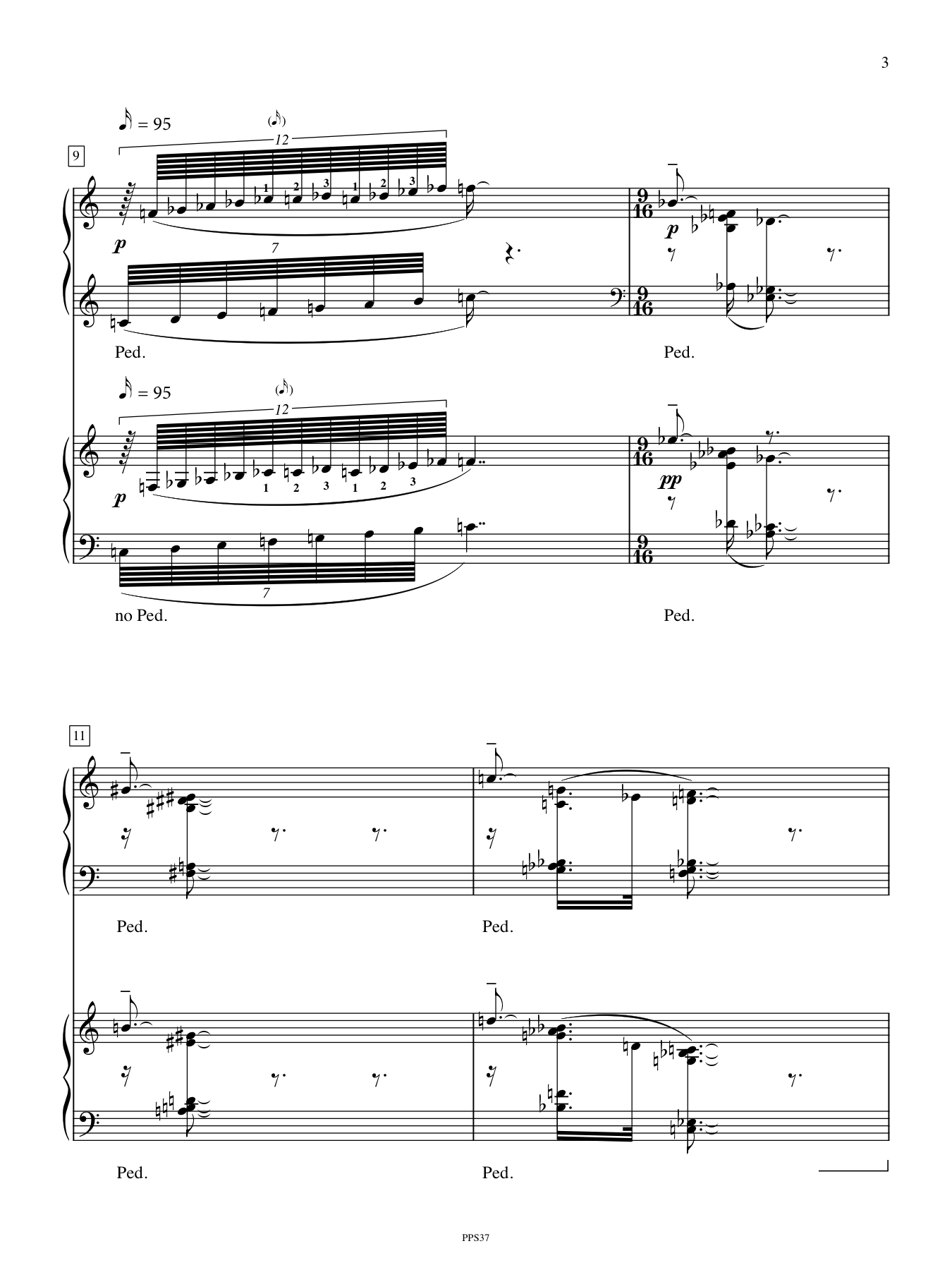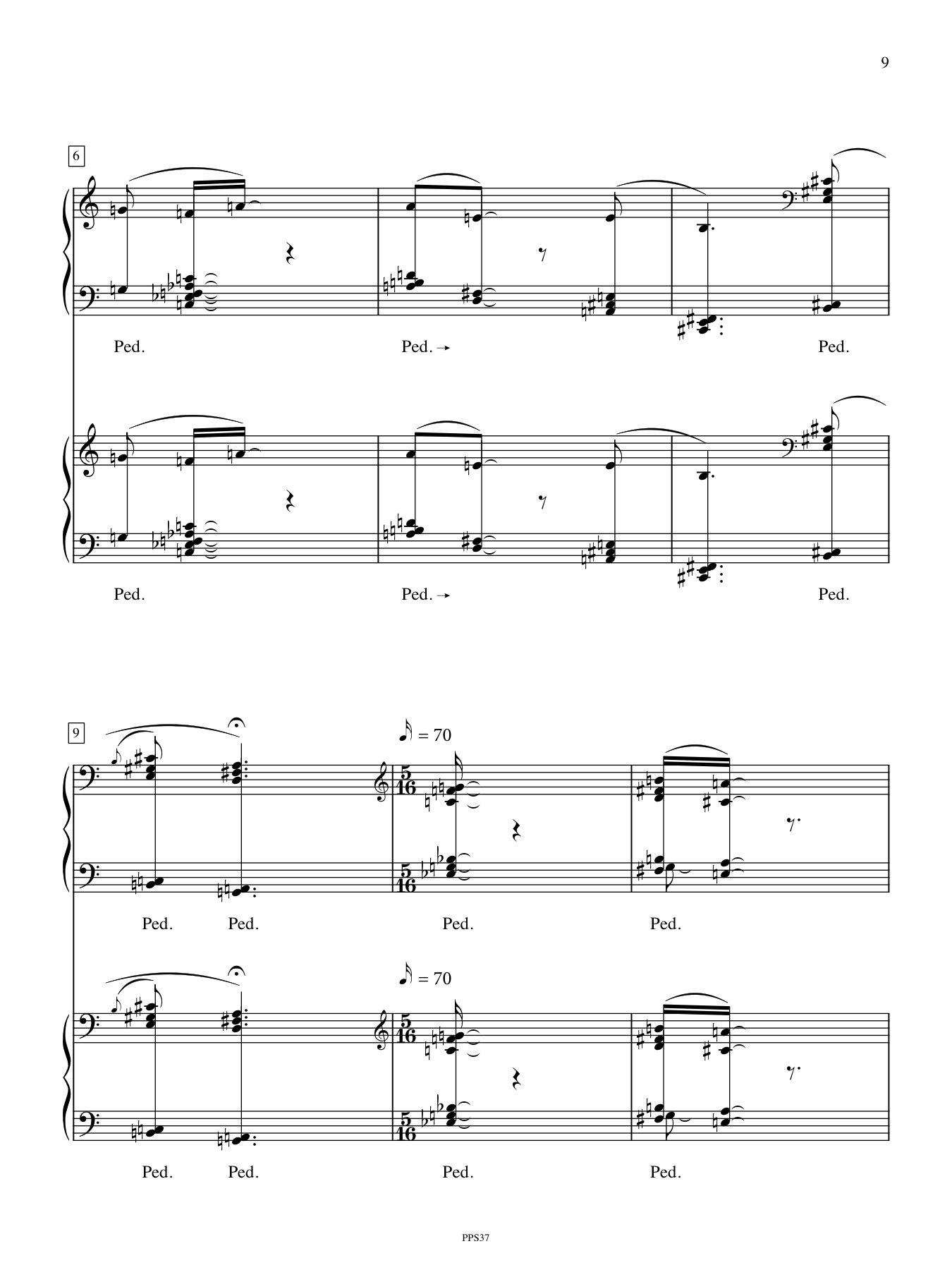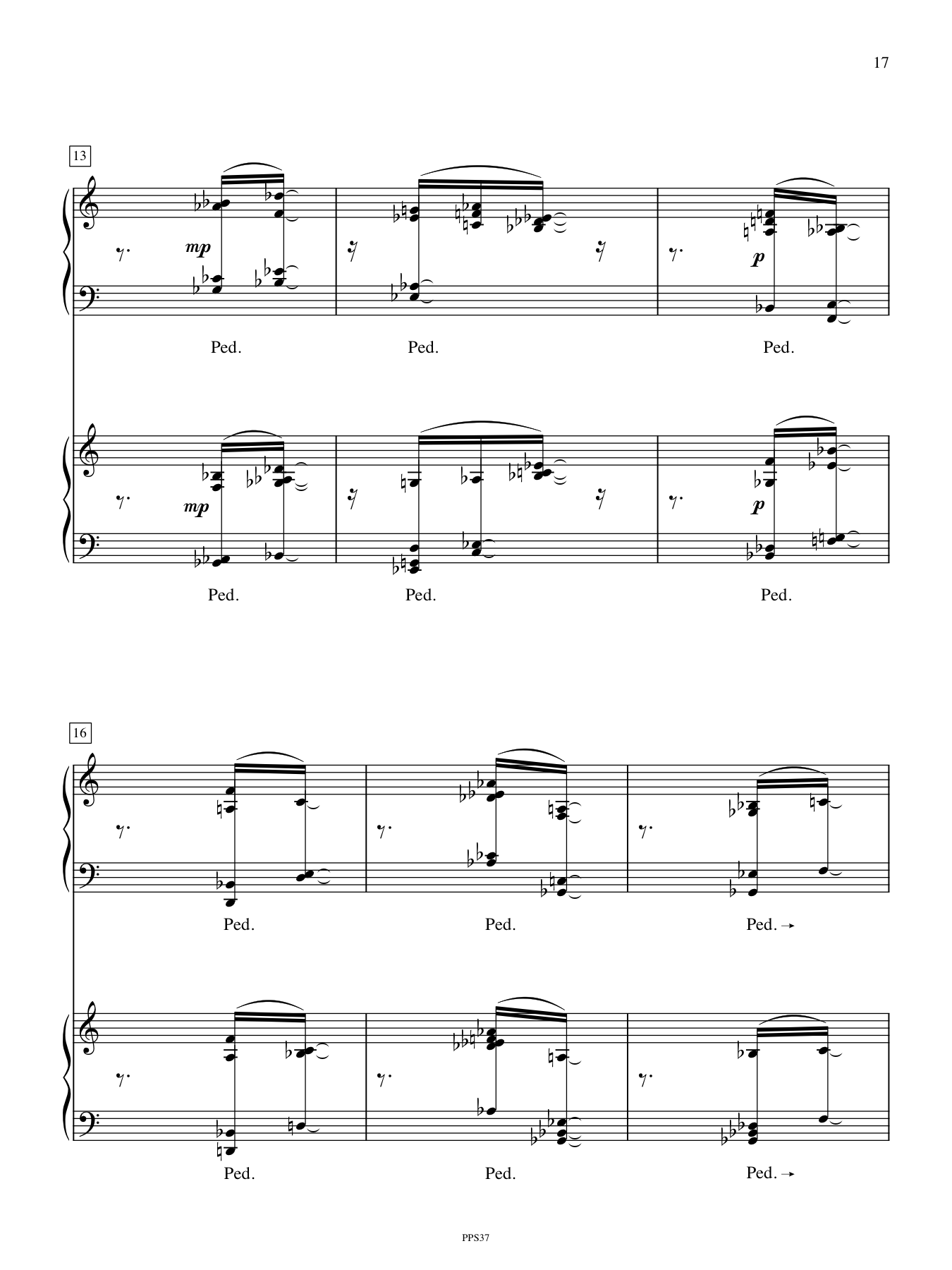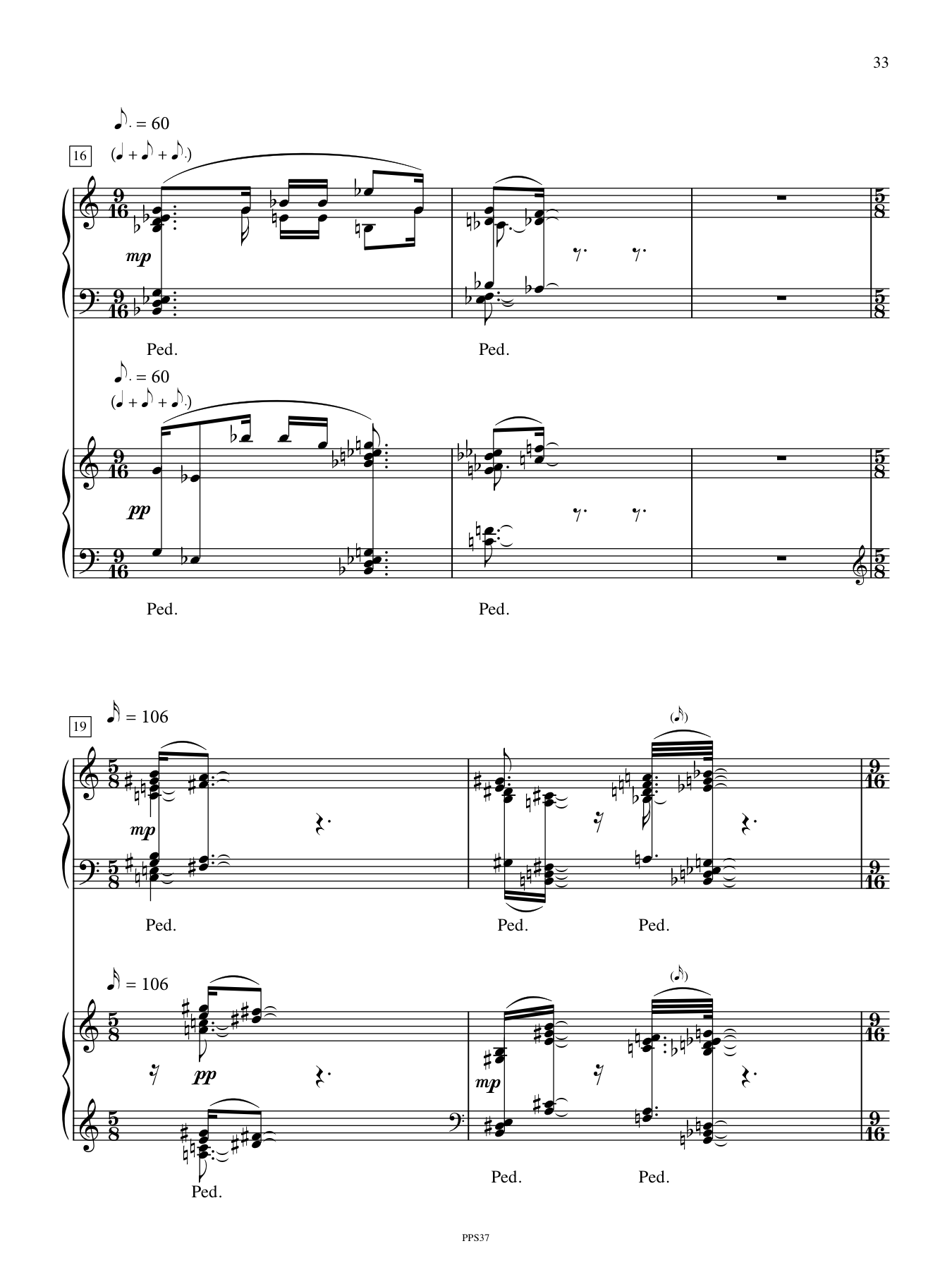︎︎︎Info
Title
Twinlings
Inventory
2 pno/el pno
Year
2020
Duration
18’
Commission
-
Publisher
Premiere
Jul 28, 2023
Bang On A Can Loud Weekend Festival
Mass MoCA
North Adams, MA (US)
Xingyi Betty Chen, kbrd 1
Madeline Hildebrand, kbrd 2
Bang On A Can Loud Weekend Festival
Mass MoCA
North Adams, MA (US)
Xingyi Betty Chen, kbrd 1
Madeline Hildebrand, kbrd 2
︎︎︎Detailed Inventory
︎︎︎Note
Twinlings is a collection of seven short pieces examining symmetry operations in a musical context. It can be performed on electric pianos (ideally Fender Rhodes) or two grand pianos. The two instruments should be as closely matched as possible, but a combination of electric and acoustic pianos is also possible. Piano 1 should be panned or positioned to the left and Piano 2 to the right so that the listener can separate the two more clearly. If using Rhodes piano(s), the use of a tremolo effects box (e.g. Boss PN-2) is recommended. If using two Rhodes with two tremolo boxes, take care to adjust the rates to deliberately be out of sync with each other, resulting in an interesting and unpredictable interplay of subtle pulsation. The rates should be somewhere between 300-600ms.
These pieces came into being during 2019-2020 in a completely organic way: there is no technical masterplan as regards the whole. If there is a throughline it is a direct result of my day to day compositional activities. Each composition on the other hand is more tightly bound by impositions of symmetrical order, but the music could certainly be intuitively enjoyed and understood without any foreknowledge of such technical considerations.
There are seven movements, each one its own gated environment of harmonic architecture. The Piano I part of the first movement is identical to a short piano piece written as an anniversary gift; for Twinlings a second piano part was constructed using various translations and rotations not present in the original. In this way, new vertical (chordal) and horizontal (rhythmic-harmonic) symmetries were created. Perhaps the embryonic and slightly scattered piece can be seen as a receptacle containing the six other movements in compressed form. Small blocks that reference later moments become important touchstones for the listener, yet, since the movement was composed last, they can also be seen as notes in an appendix appearing before the main text (what is future is prologue).
The remaining movements contain numerous palindromic forms, vertical and horizontal symmetries, rotations, translations, identities and variations. The work is part technical study, part mall soundtrack. Written without a performance context in mind, this is music just as suited for private rumination as public presentation, a reason to invite company in meditation on sameness and difference.
| two acoustic pianos two electric pianos (e.g. Rhodes) or a combination of the two |
︎︎︎Note
Twinlings is a collection of seven short pieces examining symmetry operations in a musical context. It can be performed on electric pianos (ideally Fender Rhodes) or two grand pianos. The two instruments should be as closely matched as possible, but a combination of electric and acoustic pianos is also possible. Piano 1 should be panned or positioned to the left and Piano 2 to the right so that the listener can separate the two more clearly. If using Rhodes piano(s), the use of a tremolo effects box (e.g. Boss PN-2) is recommended. If using two Rhodes with two tremolo boxes, take care to adjust the rates to deliberately be out of sync with each other, resulting in an interesting and unpredictable interplay of subtle pulsation. The rates should be somewhere between 300-600ms.
These pieces came into being during 2019-2020 in a completely organic way: there is no technical masterplan as regards the whole. If there is a throughline it is a direct result of my day to day compositional activities. Each composition on the other hand is more tightly bound by impositions of symmetrical order, but the music could certainly be intuitively enjoyed and understood without any foreknowledge of such technical considerations.
There are seven movements, each one its own gated environment of harmonic architecture. The Piano I part of the first movement is identical to a short piano piece written as an anniversary gift; for Twinlings a second piano part was constructed using various translations and rotations not present in the original. In this way, new vertical (chordal) and horizontal (rhythmic-harmonic) symmetries were created. Perhaps the embryonic and slightly scattered piece can be seen as a receptacle containing the six other movements in compressed form. Small blocks that reference later moments become important touchstones for the listener, yet, since the movement was composed last, they can also be seen as notes in an appendix appearing before the main text (what is future is prologue).
The remaining movements contain numerous palindromic forms, vertical and horizontal symmetries, rotations, translations, identities and variations. The work is part technical study, part mall soundtrack. Written without a performance context in mind, this is music just as suited for private rumination as public presentation, a reason to invite company in meditation on sameness and difference.
︎︎︎Score Excerpts













